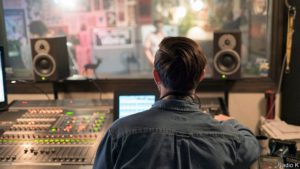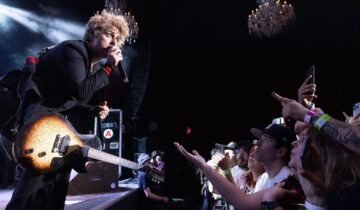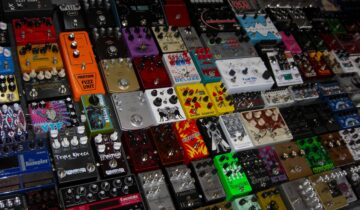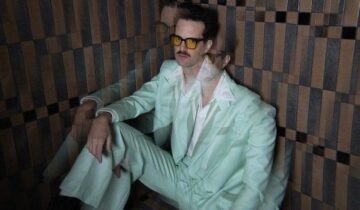 For the ECONOMIST: IN THE 1980s and 1990s college radio stations were champions of independent music. Listeners bored with the predictable offerings of mainstream stations could turn to college radio for a wide range of genres curated into specialty shows. The DJs, though housed in the nooks, crannies and spare rooms of American campus buildings, were knowledgeable and immersed in their local music scenes. They often booked and promoted shows: it was how bands such as R.E.M. and Nirvana were discovered.
For the ECONOMIST: IN THE 1980s and 1990s college radio stations were champions of independent music. Listeners bored with the predictable offerings of mainstream stations could turn to college radio for a wide range of genres curated into specialty shows. The DJs, though housed in the nooks, crannies and spare rooms of American campus buildings, were knowledgeable and immersed in their local music scenes. They often booked and promoted shows: it was how bands such as R.E.M. and Nirvana were discovered.
The music industry is still peppered with former college radio DJs and volunteers, but many believe this generation will be the last to come through the system. Facing listenership decline, some colleges have sold off their radio licences or been incorporated into larger networks. Some have sought to revitalise the sector. World College Radio Day was founded in 2010 in order to celebrate “one of the last remaining bastions of creative radio programming” and encourage “people who would not normally listen to college radio to do so on this day”.
The concern about radio is not limited to student-run stations. In 2016 a media-consumption survey claimed that only 9% of people between 12 and 24 use terrestrial radio to keep up with music, opting instead for YouTube, Pandora or Spotify. Citing a report by New York University (NYU), Digital Music News, a website, proclaimed in 2017 that terrestrial radio as a whole would be dead in ten years as streaming services and smart speakers further shape consumers’ preferences and listening habits.
Yet other research considers this gloomy prognosis premature. The State of the Media report for 2018 from Nielsen, a market-research company, reckons that radio is experiencing a “reawakening” in America. They found that AM and FM radio reaches more people each week than any other medium with roughly 228.5m consumers, compared with 216.5m for television and 203.8m accessing apps or the web on a smartphone. According to Nielsen, broadcast radio’s weekly reach is larger than that of streamed audio (68.5m) and podcasts (21.9m). (Larry Miller, one of the authors of the NYU report, said that Nielsen has under-sampled young listeners.)
Radio K, the University of Minnesota’s radio station, demonstrates how college radio can not just weather the changes, but thrive in this new climate. Maddie Schwappach, the music director, states that digital tools have allowed them to take their curatorial work to a wider audience. The station hosts roughly 50 band performances a year, and it livestreams the events on Twitter or posts the videos on its YouTube channel. Listenership tends to be highest on Friday afternoons between 3 and 5pm, when hosts focus on local bands. It is highly engaged, too: they get the most calls, listener requests and donations during those segments.
Some digital-native DJs post full recordings of their shows on SoundCloud, Spotify or Bandcamp, or edit them down into podcasts. They pose questions on social media ahead of the programme—such as “What’s the saddest song?”—that are likely to elicit a reaction and entice listeners to engage with the show. The station uses social media to promote ticket giveaways, and posts about bands on Snapchat or Instagram. Graphic-design students help to create a distinguishable brand identity.
“The way people interact with music is so online-based. I can share Spotify playlists, but it won’t necessarily help bands get gigs, or bring people together,” Ms Schwappach says. “The feedback we get from donors and listeners is that they’re glad to have humans pick music for them to listen to. They like hearing us stumble over a band’s name, they like that personal connection.” Gary McDonald, co-founder of the North American College and Community Radio Chart, which tabulates weekly airplay, agrees. “College radio is vouching for music by building trust with its audience.”
College radio can still be heard in the cacophony. Stations are a destination for those seeking new music and, crucially, new perspectives on that music which algorithms cannot provide. College radio may not again witness the heyday it had in the late 1980s and early 90s, but it is still capable of being a tastemaker, curating music journeys and championing local artists.



